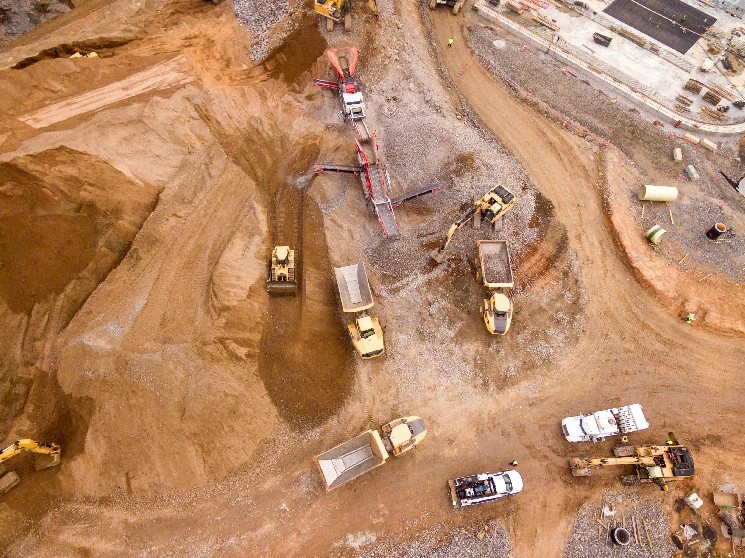Microsoft’s $17.4 Billion GPU Deal Ignites Crypto Mining Stock Surge
Nebius Group Agreement Signals New Era for High-Performance Computing Sector
In a significant development highlighting the growing intersection between cryptocurrency infrastructure and artificial intelligence demands, crypto mining stocks experienced remarkable gains on Tuesday following Nebius Group’s announcement of a substantial five-year agreement with Microsoft. The deal, valued at a staggering $17.4 billion, will supply the tech giant with essential graphic processing units (GPUs) to enhance its artificial intelligence capabilities, triggering widespread investor enthusiasm across the computing-intensive sector.
The market’s reaction to this partnership reveals a fundamental shift in how investors perceive crypto mining companies—no longer merely as bitcoin production operations but as versatile providers of critical computing infrastructure suitable for the AI revolution. Notably, the rally in mining stocks occurred despite bitcoin itself declining approximately 1% to $111,100 over the 24-hour period, dropping from an earlier advance. This divergence underscores an emerging trend: investor sentiment is increasingly tethered to the potential role mining infrastructure could play in supporting AI development rather than being exclusively linked to cryptocurrency price fluctuations.
Mining Companies See Dramatic Share Price Increases as AI Infrastructure Value Proposition Strengthens
Tuesday’s trading session saw Bitfarms (BITF) leading the sector with an impressive 22% gain, while Cipher Mining (CIFR) shares surged by 20%. Other notable performers included IREN (IREN), Hut 8 (HUT), Riot Platforms (RIOT), and TeraWulf (WULF), all of which registered substantial gains in the mid-teens percentage range. These significant price movements reflect growing market recognition of mining companies’ underlying technological assets—data centers, power infrastructure, and computing resources—which could potentially be repurposed or simultaneously utilized for AI applications beyond their original cryptocurrency mining functions.
Perhaps most telling was the relatively modest performance of MARA Holdings, which recorded only a 4% increase despite the sector-wide rally. This underperformance likely stems from MARA’s recent strategic pivot toward becoming more of a bitcoin treasury company rather than emphasizing high-performance computing capabilities. The market’s lukewarm response to MARA compared to its peers suggests investors are now differentiating between mining operations based on their potential utility in the broader computing ecosystem, particularly as it relates to AI infrastructure readiness.
Industry Evolution: From Bitcoin Halving Cycles to AI Integration Opportunities
The outsized stock movements witnessed across the mining sector reflect a fundamental transformation in the industry’s operating landscape. Historically, mining profitability was predominantly dictated by bitcoin’s four-year halving cycle, a protocol-defined event that cuts block rewards in half and traditionally reshapes the economics of mining operations. However, this predictable rhythm no longer exclusively dominates the sector’s prospects, as companies now face additional challenges including escalating power costs, continuous hardware advancement necessitating regular upgrades, and intensifying competition as equipment manufacturers like Bitmain continue expanding production capacity.
This changing reality has compelled mining companies to reconsider their business models and explore diversification opportunities. The Microsoft-Nebius deal serves as a powerful market signal highlighting the extraordinary value placed on GPU access in today’s technology landscape. This has created a potentially lucrative opportunity for cryptocurrency miners who already possess substantial energy resources, data center facilities, and technical expertise that could be leveraged for AI applications. As the boundaries between specialized computing sectors continue to blur, miners with scalable infrastructure and adaptable business strategies are positioning themselves to capitalize on this convergence.
CoreWeave Expands AI Footprint with New Venture Capital Initiative
Adding further momentum to the AI-crypto infrastructure narrative, CoreWeave announced the launch of a dedicated venture capital arm specifically targeting AI startups. This strategic move, which helped drive CoreWeave shares up 4.5%, represents another significant indicator of how companies with high-performance computing assets are expanding their business models to embrace the AI revolution. By creating an investment vehicle focused on nurturing early-stage AI companies, CoreWeave is establishing itself not just as an infrastructure provider but as an active participant in the broader AI ecosystem development.
This expansion into venture capital highlights a sophisticated evolution in how mining-adjacent companies are approaching the market. Rather than simply providing raw computing power, firms like CoreWeave are developing comprehensive strategies that include investing in the very technologies that will drive future demand for their infrastructure services. This approach creates a virtuous cycle where the company’s investments potentially increase the value of its core services while providing early access to emerging technologies that could further enhance its competitive position.
Future Outlook: Reimagining Mining Companies as Versatile Computing Infrastructure Providers
As artificial intelligence continues its rapid advancement across virtually every industry sector, mining companies with substantial energy agreements and sophisticated data center operations are uniquely positioned to benefit from this technological shift. Many are already exploring opportunities to lease computing capacity to hyperscalers like Microsoft, Google, and Amazon, or pivot toward comprehensive data center services that extend well beyond cryptocurrency mining. This transition represents both a hedge against crypto market volatility and a strategic expansion into high-growth computing markets with potentially more stable revenue streams.
The remarkable market response to the Nebius-Microsoft agreement serves as compelling evidence that investors are increasingly valuing mining companies based on their potential contributions to the broader computing ecosystem rather than solely on their bitcoin production metrics. For the industry’s forward-thinking operators, this shift presents an opportunity to transform what was once considered a specialized, cyclical business into a versatile technology infrastructure play with multiple revenue streams and growth vectors. As the boundaries between cryptocurrency mining, high-performance computing, and AI infrastructure continue to blur, companies that successfully navigate this convergence may find themselves at the forefront of the next computing revolution—one that extends far beyond the blockchain technology that initially spawned them.


